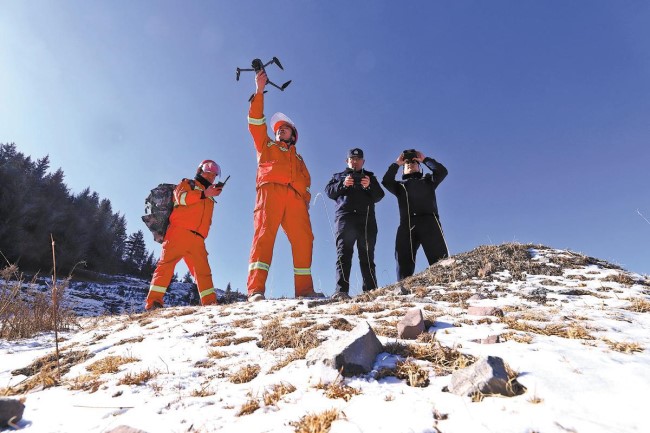Rare species return to Qilian Mountains
Conservation efforts spur wildlife population growth, but human-animal conflicts remain a challenge
Editor's note: As protection of the planet's flora, fauna and resources becomes increasingly important, China Daily is publishing a series of stories to illustrate the country's commitment to safeguarding the natural world.

Rangers and forest police officers patrol the Qilian Mountain National Nature Reserve in Zhangye, Gansu province, in January 2023. [Photo provided to China Daily]
The Qilian Mountains in Northwest China have come nearly full circle from four decades ago when the flora and fauna were threatened by deforestation, grazing and poaching.
The 1,000-kilometer mountain range separating Qinghai and Gansu provinces is today hailed as an oasis surrounded by desert. The towering peaks of the Qilian Mountains capture warm, moist air from the southeast, creating abundant precipitation. This climate and the various ecological environments in the area have fostered diverse habitats for numerous wildlife species, including snow leopards, wild yaks and black-necked cranes.
Starting in the 1980s, a time when the health and biodiversity of the mountains were threatened by human activities, ecological protection work has been carried out.
Over the past decade, in particular, the region has undergone the strictest environmental rectification in its history — human activities in core protected areas have been eliminated, allowing the natural environment to recover effectively.
However, as these rare species return to the public's view, new issues have emerged concerning the relationship between humans and nature, as well as with animals.








